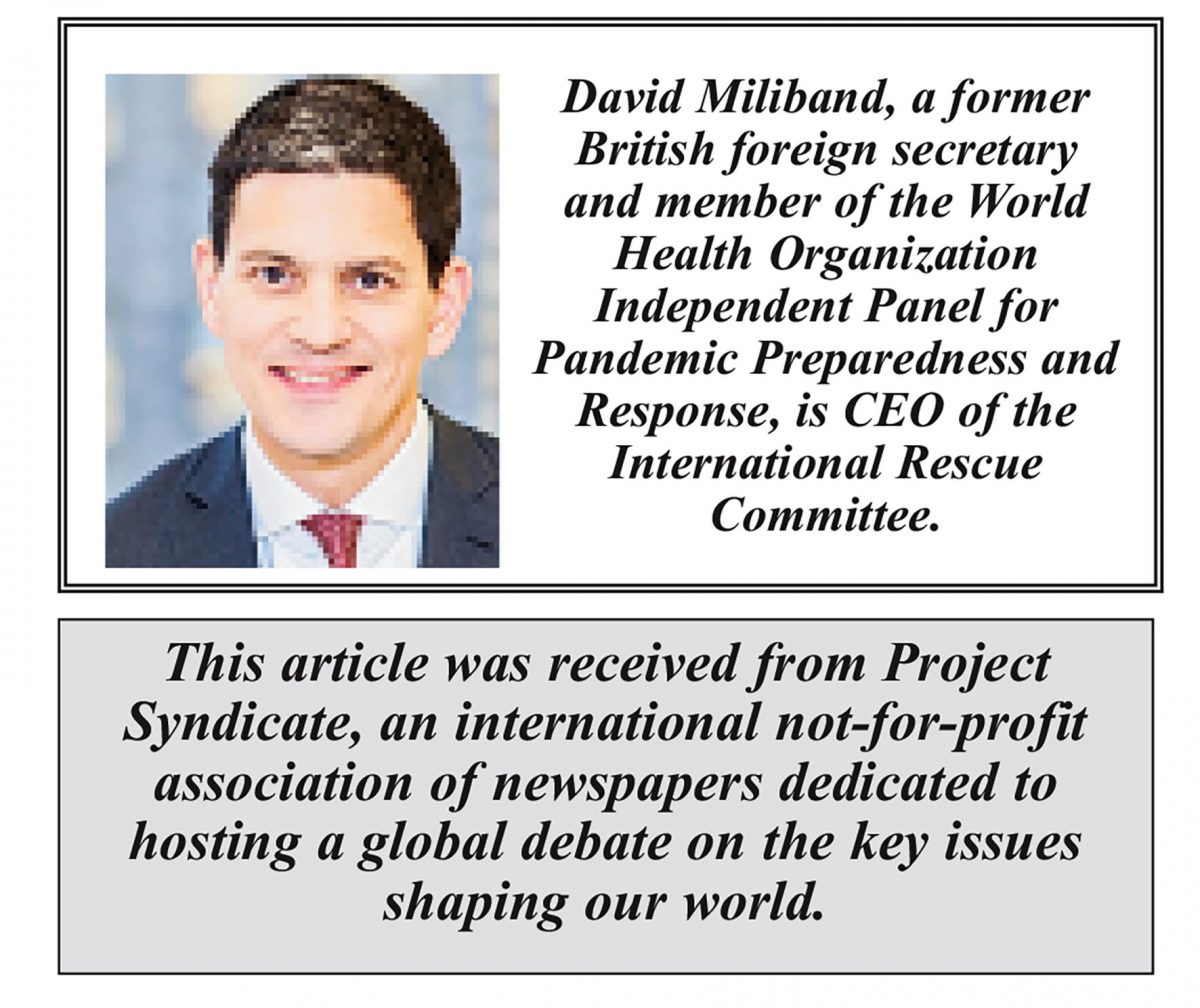NEW YORK – On March 8, the United Nations Security Council passed a resolution calling for an immediate cessation of hostilities in Sudan during the holy month of Ramadan. It also urged all parties to the conflict to ensure the rapid and safe delivery of humanitarian assistance and to uphold their obligations under international humanitarian law, including to protect civilians.
The violent conflict, which erupted last April following a standoff between the Sudanese Armed Forces and the Rapid Support Forces (RSF), a powerful paramilitary group, has since engulfed more than half the country. Nearly a year later, the Security Council’s push for a ceasefire and the free flow of aid is an essential step forward, following increasingly urgent calls for an immediate halt to the fighting from the African Union and UN Secretary-General António Guterres. Now, policymakers must translate words into action.
The situation in Sudan is catastrophic. Half the population – 25 million people – are in desperate need of humanitarian assistance. According to the UN World Food Programme, nearly 18 million people are facing acute hunger – more than double this time last year – and must make impossible decisions to feed themselves, while nearly five million (equivalent to the population of Ireland) are on the brink of famine. Since the conflict began, more than eight million people have been displaced. In December, US Secretary of State Antony Blinken issued a determination that war crimes, crimes against humanity, and ethnic cleansing were occurring in Sudan, evoking ominous echoes of the Darfur genocide.
Given these conditions, it comes as no surprise that Sudan topped the International Rescue Committee’s Emergency Watchlist for 2024. The conflict has devastated agricultural production, while the weaponization of humanitarian aid has restricted the flow of food and medicine to the country. Moreover, the near-total destruction of the health-care system has led to the spread of preventable diseases, while the banking system’s paralysis has triggered economic collapse.
More than a half-million displaced people have sought refuge in South Sudan, itself one of the world’s poorest countries. On a recent visit, I heard heartbreaking stories from Sudanese refugees. Asma, a mother of two, traveled more than 400 miles from the capital, Khartoum, with her children, who were set to start university last year. She left because, confronted with increased fighting, she “didn’t have a choice.” Maban, the border county where I met Asma, is hosting 220,000 displaced people – more than four times the original population. And at least 1,500 Sudanese continue to cross into South Sudan every day.
Worse still, the conflict in Sudan has become internationalized: a wide range of competing African interests have taken sides, as have Saudi Arabia and the United Arab Emirates, while Russia’s Wagner Group has reportedly armed the RSF. This type of conflict, which threatens to become the new normal, are likely to last nearly four times as long as a conventional civil war involving only in-state actors. Such a complex geopolitical picture complicates diplomacy.
One potential solution is the idea of “African solutions to African problems,” which in practice means that the AU, not the Security Council, would manage African crises. But this approach, to the extent that it has been implemented, has not resolved the conflict in Sudan. African leaders should be able to lead, but they must not be left to fend for themselves.
Now that the Security Council has spoken, it must implement practical measures to slow, and ultimately stop, the fighting. Its resolution should serve as a wake-up call for policymakers to intensify joint efforts, especially because the conflict is spreading faster than diplomacy can respond.
This includes measures to protect civilians and the infrastructure on which they rely, such as hospitals. So far, the conflict has significantly disrupted Sudan’s health system. The World Health Organization has verified 58 attacks on health-care facilities since the fighting began, while finding that 70% of hospitals in conflict-affected states are non-functional, owing to violence and shortages.
There is also an urgent need to facilitate the full flow of humanitarian aid through the most direct routes. Given the current access constraints in Sudan, this will require new and innovative ways of calling attention to the various obstacles, which could in turn lead to more effective diplomatic solutions. The IRC, for example, has proposed the creation of a new Independent Access Organization to improve reporting on impediments to access and encourage global, regional, and national policymakers to act.
More funding is equally crucial. At a UN pledging conference last year, donors committed less than half the amount needed to fund the humanitarian response in Sudan and neighboring countries hosting refugees. In 2024, nearly 25 million people in Sudan will need aid. But, to date, the $2.7 billion and $1.4 billion funding appeals, launched by the UN Office for the Coordination of Humanitarian Affairs and the UN Refugee Agency, respectively, are far from meeting their targets. The refugee burden on other countries, including the Central African Republic, Chad, and Ethiopia, is increasing the risk of regional destabilization.
Sudan’s experience over the past few years has demonstrated how quickly a country can succumb to violence. Three years ago, a civilian government took power. Now, the country is a hellish war zone. According to the International Crisis Group, Sudan is at the edge of a precipice, with Khartoum – the country’s economic and political center – “an unrecognizable shell.” Without more aid for Sudan and its neighbors, instability will spread. Courageous political leadership is needed to halt the slide. But policymakers must act quickly to prevent the power vacuum in Sudan from becoming a wider threat.
Copyright: Project Syndicate, 2024





